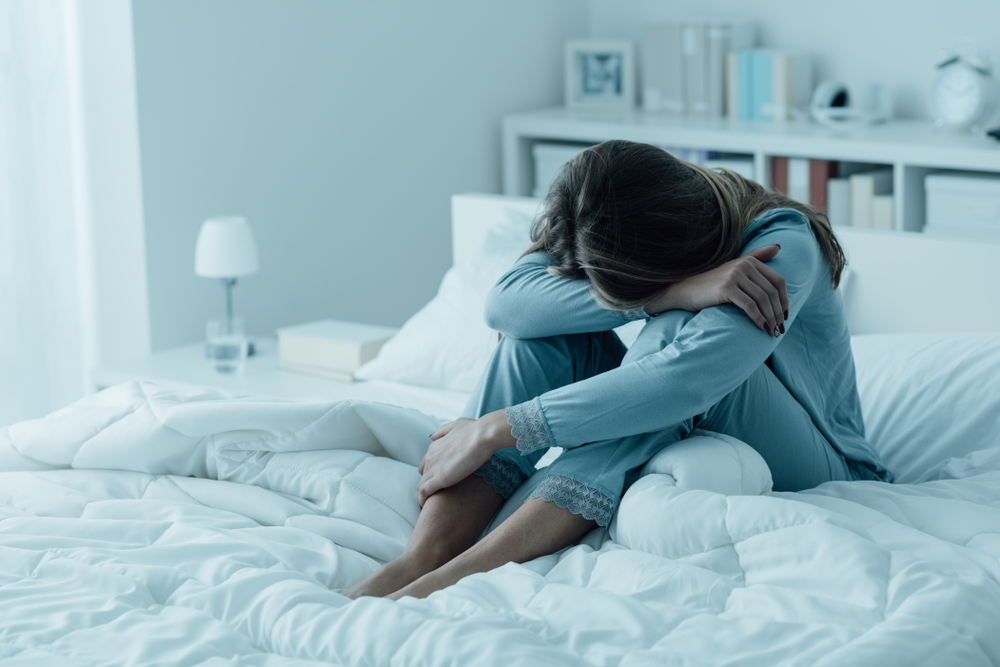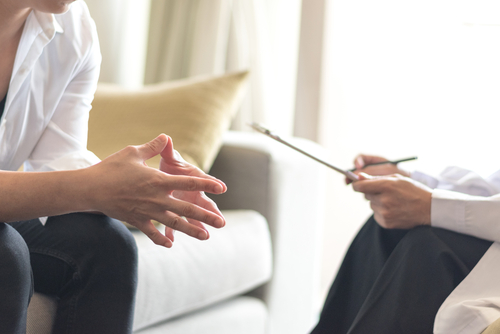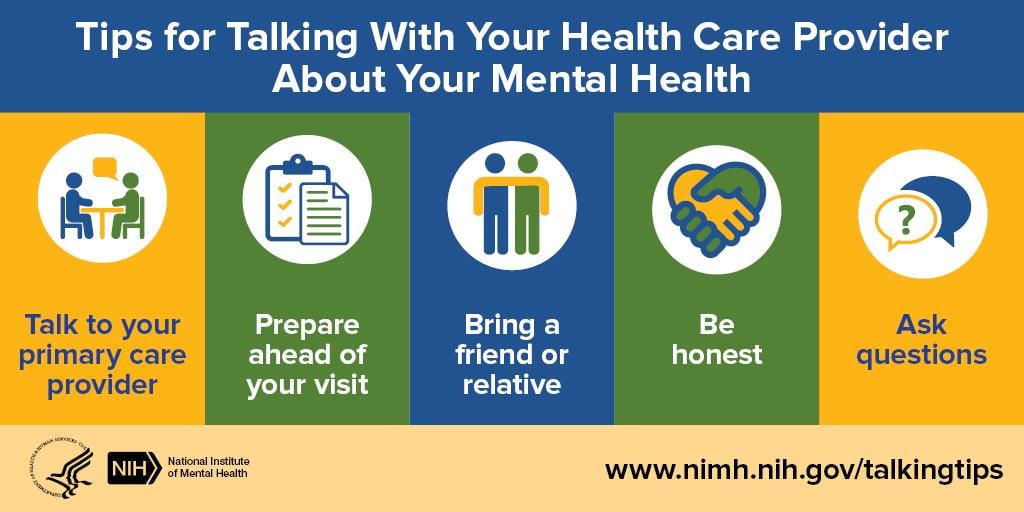A closer look at clinical depression in this pandemic
There is another silent pandemic this country is facing. Like many viruses, clinical depression doesn’t choose whom it affects.
Anna is a 33-year-old female working in the cosmopolitan district of Taguig. She’s your typical poster millennial woman—curated Instagram feed, multiple trips across Asia in a year, brunches with the girlfriends, the works.
On the outside, she is your dynamic modern-day woman who has her life figured out. Yet the moment the filters drop and the last paper cup of third-wave coffee has been dunked in the trash, she faces a whole different world. One that has red paint haphazardly splashed across the door with the words “clinically depressed.”
According to Diagnostic and Statistical Manual of Mental Disorders, clinical depression starts with a “depressed episode” characterized by nine symptoms: low mood, motivation, energy and concentration; low control of sleep, appetite, and psychomotor reactivity; thoughts on worthlessness and helplessness, and recurrent thoughts of death and dying.

Clinical depression starts with a “depressed episode”
“If a patient experiences five out of these nine symptoms in an episode that lasts two weeks (and more), then they can be classified as being clinically depressed or having Major Depressive Disorder,” Dr. Alexandra J. Palis, a physician and general psychiatric practitioner, explains.
“If the episodes start to impair someone from functioning properly when it comes to self-care, relationships, and doing occupational tasks, then it’s time to ask for help.”
Dr. Palis is among those who—though not working in the frontlines when it comes to fighting the pandemic—is feeling the brunt that the Covid-19 situation has caused. “The pandemic is not only an active public health concern but a stressful event as well. It has disturbed the system and balance from a small to a large scale. You can see this change from the basic units of households, up to more complex systems such as workplaces and even our environment,” she shares.
It doesn’t discriminate
The case of Anna is a small representation of the silent pandemic that the country is facing. Like many viruses, clinical depression doesn’t choose whom it affects.
Pam, a 23-year old fresh graduate who recently lost her job in the service industry, is another face of it. After being axed by her company, she started having episodes of psychosis—a distortion of thoughts and perceptions, making it difficult to tell what is real or not.
After unexplained crying spells and moments of blank staring, her sister managed to book her an appointment with a psychiatrist to get supportive therapy.
After being axed by her company, she started having episodes of psychosis—a distortion of thoughts and perceptions, making it difficult to tell what is real or not.
It’s a different tune for Philip, a forty-something ambulance driver who was also diagnosed with clinical depression. With the stress and risk of his everyday job, he started developing chest discomfort, abdominal upset, and difficulty in breathing.
Though he still reports to work every day, he admits that he needs to take a moment to stop himself from obsessing about the fear of getting the virus himself.
“Treatment of patients is by administering medications to treat symptoms, and, if they’re more receptive, with psychotherapy or talk therapy,” says Dr. Palis. “Prior to the pandemic, assessment was done by separately interviewing patients and collateral informants in their clinic visit. A thorough mental status examination is done and then we arrive at an assessment.”
The burden of the pandemic
With observation and thorough interviews serving as major tools for a psychiatric assessment, it comes as no surprise that specialists like her have their adjustments to make.
“At present, I chose to close my physical clinics while the quarantine is active in the interest of the patients’ safety and mine. The process that was done face-to-face with a patient is now completed through my online medium of choice which is e-mails.”
In other situations, when the patients are unable to express themselves through writing, Dra. Palis shares that she also used to conduct virtual consultations to properly observe them.
Many professionals like her have also pivoted to doing online consultations. “I am comfortable expressing myself and communicating to patients with narrative, and the correspondence can also be saved and used as reference,” she continues.

However, she also says that there are new challenges that she had to learn to navigate.
“The adjustments to this medium took a toll on the number of patients I could accommodate because some patients and families have difficulty expressing themselves in a narrative form. This is why patient consultations have decreased over the past months of the quarantine.”
“It’s hard,” Anna, the only person who obliged to provide a quote for this story, says. “When you are depressed, you can barely even get out of bed. How can you even decide when to ask for help or book an appointment?”
She also shares that since she has been stuck in the city alone since the quarantine started, she didn’t even have the support of her family in looking for psychiatric assistance.
“I’ve lost friends. I’ve deactivated and activated my social media accounts so many times. I’ve gone through a day without eating anything, then another day of just eating everything. It’s hell. I prefer going to face-to-face consultations because at least I have a real person to talk to, but I guess what’s nice about the situation now is help is just one e-mail or call away.”
Treating the clinically depressed
According to Dr. Palis, several treatments can be used to help people suffering from clinical depression. Of course, there is medication but there is also therapy and other psychiatric intervention and psychoeducation that aim to help the patients understand their situation better.
“In my opinion, patients who experience changes in feelings, thoughts, and behavior with difficulty of doing day-to-day functions but are not yet impaired can first go to psychologists. They can conduct psychotherapy and interpret behaviors, but not offer medical treatment. They can also administer psychometric testing that can identify mental capabilities and behavior style.
I’ve gone through a day without eating anything, then another day of eating everything. It’s hell. I prefer face-to-face consultations because at least I have a real person to talk to.
“However, if an individual experiences impairment of functioning along with changes in emotion and thinking, then it is best to go to a psychiatrist. Psychiatrists are physicians who evaluate the biological basis for symptoms and have the capacity to administer medical treatment so they can alleviate extreme symptoms.”
There is strength in asking for help
Despite its prevalence, there is no doubt that the stigma on mental health disorders remains in the country. As a practitioner who is exposed to it every day, Dr. Palis has an inside look at the struggle, as well as the strength, that asking for help entails.
“Whether it is the patient or their loved ones coming to us for help, I recognize how important it is to lend a hand when people need it the most. I have high respect for patients with mental health problems, especially those who muster the strength to consult. Not only have they been enduring a very difficult affliction of thought and emotion, but they also bear great humility in asking for help.”
So the next time you feel like you need some help with your thoughts—or if you are supporting someone who is carrying the burden—never be afraid to reach out and ask for help.
Lastly, remember these words: “Hello. You are okay. We are okay.”

Reach out
(0917) 565-2036, pmhaacds@gmail.com, pmha.eard@gmail.com
(0906) 374-3466
(0917) 709-6961, (0997) 561-8778
(0917) 822-2325, (0925) 557-0888
(0917) 558-4673, (0918) 873-4673, 8-804-4673


